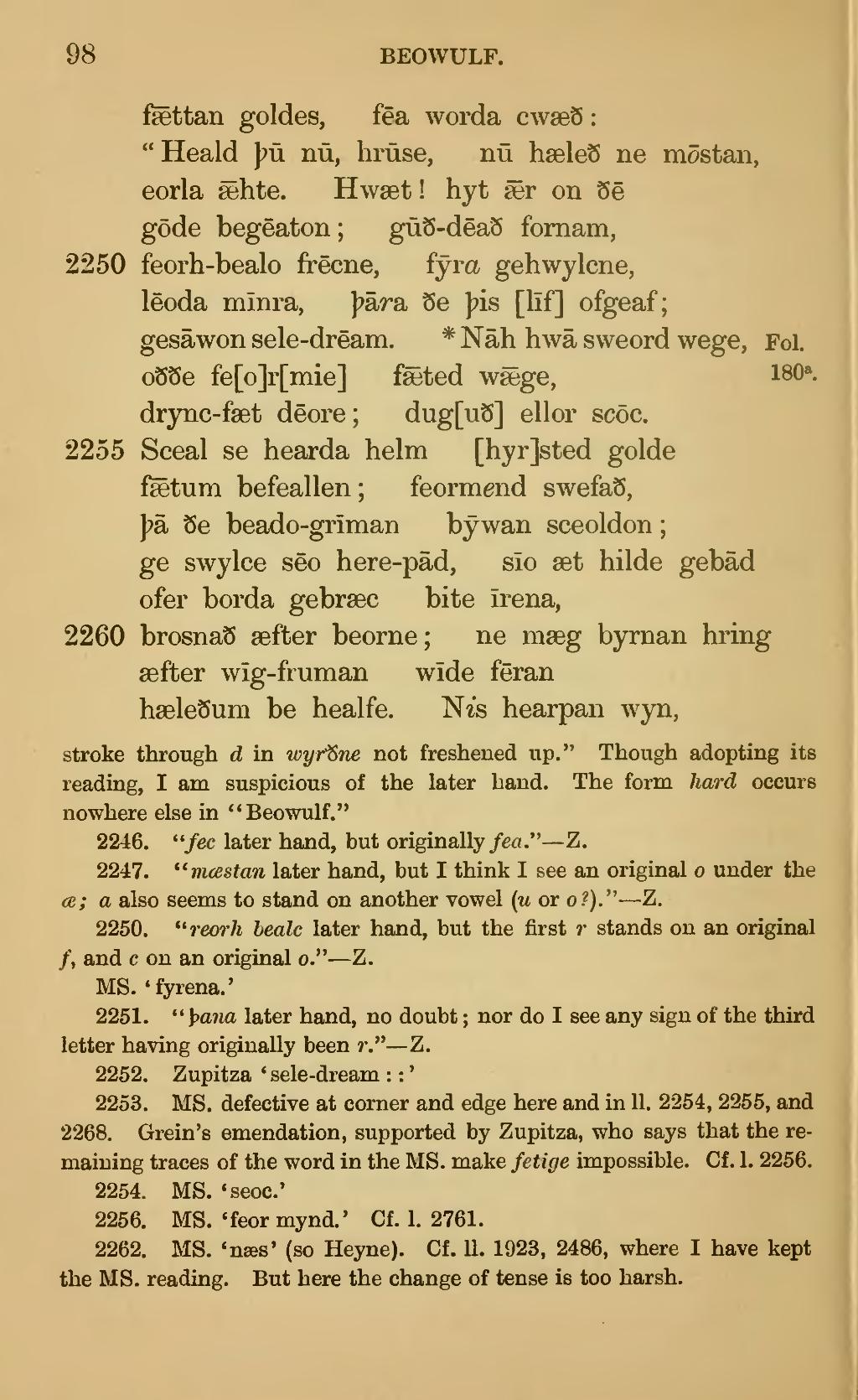fǣttan goldes, fēa[1] worda cwæð:
“Heald þū nū, hrūse, nū hæleð ne mōstan,[2]
eorla ǣhte. Hwæt! hyt ǣr on ðē
gōde begēaton; gūð-dēað fornam,
2250feorh-bealo frēcne, fȳra gehwylcne,[3]
lēoda mīnra, þāra[4] ðe þis [līf] ofgeaf;
gesāwon sele-drēam.[5] *Nāh hwā sweord wege,Fol. 180a.
oððe fe[o]r[mie] fǣted wǣge,[6]
drync-fæt dēore; dug[uð] ellor scōc.[7]
2255Sceal se hearda helm [hyr]sted golde
fǣtum befeallen; feormend[8] swefað,
þā ðe beado-grīman bȳwan sceoldon;
ge swylce sēo here-pād, sīo æt hilde gebād
ofer borda gebræc bite īrena,
2260brosnað æfter beorne; ne mæg byrnan hring
æfter wīg-fruman wīde fēran
hæleðum be healfe. Nis[9] hearpan wyn,
- ↑ 2246. “fec later hand, but originally fea.”—Z.
- ↑ 2247. “mæstan later hand, but I think I see an original o under the æ; a also seems to stand on another vowel (u or o?).”—Z.
- ↑ 2250. “reorh bealc later hand, but the first r stands on an original f, and c on an original o.”—Z.MS. ‘fyrena.’
- ↑ 2251. “þana later hand, no doubt; nor do I see any sign of the third letter having originally been r.”—Z.
- ↑ 2252. Zupitza ‘sele-dream : : ’
- ↑ 2253. MS. defective at corner and edge here and in ll. 2254, 2255, and 2268. Grein’s emendation, supported by Zupitza, who says that the remaining traces of the word in the MS. make fetige impossible. Cf. l. 2256.
- ↑ 2254. MS. ‘seoc’
- ↑ 2256. MS. ‘feor mynd.’ Cf. l. 2761.
- ↑ 2262. MS. ‘næs’ (so Heyne). Cf. ll. 1923, 2486, where I have kept the MS. reading. But here the change of tense is too harsh.
stroke through d in wyrðne not freshened up.” Though adopting its reading, I am suspicious of the later hand. The form hard occurs nowhere else in “Beowulf.”
